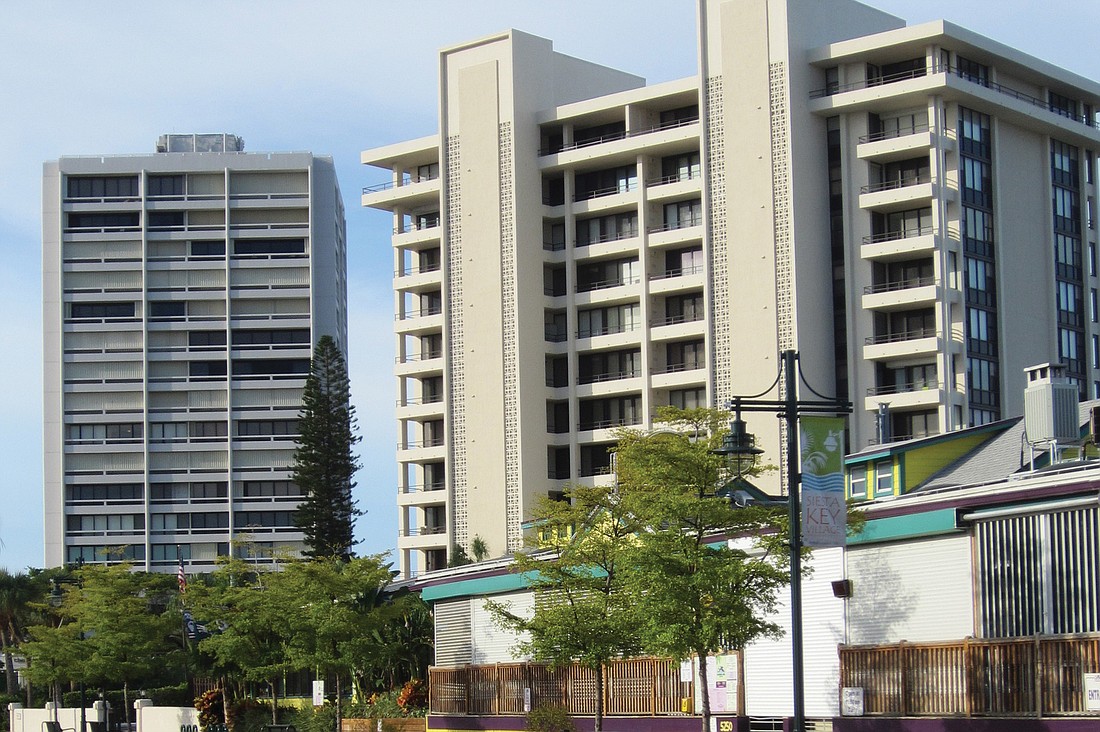- April 15, 2024
-
-
Loading

Loading

Unbeknownst to many high-rise condominium residents on Siesta Key, fire alarms do not sound on every floor when a fire is detected.
The question of residents’ protection first arose during the Aug. 4 Siesta Key Association meeting. More comments ensued during this month’s SKA gathering, after board member Joe Volpe investigated the matter.
Don Damron, chief inspector with the Fire Prevention Division of the Sarasota County Fire Department and the department’s chief building plans reviewer, said the National Fire Alarm Code recommends that rather than all alarms going off in a high-rise structure when an alarm sounds on one floor, the alarms sound only on the two floors above the original alarm and the floor below it.
People on the other floors generally are safer staying where they are, he said.
“We do not want the stairwell packed with all the residents (of the affected building),” he said.
However, because fire travels upward, sounding alarms on the two floors above increases safety. Then, if a smoke detector finds a fire rising to the third floor above the incident, he said, the alarm subsequently will go off on that floor.
In buildings that are only five or six stories tall, Damron said, an alarm on the second floor may trigger alarms throughout the building.
However, many residents are not aware of these alarm standards. Nancy Deckard is a resident of the Gulf & Bay Club, which features multiple-story buildings on Midnight Pass Road. Deckard told the SKA board Sept. 1 most Key residents believe if a fire alarm goes off on the seventh floor of their building, for example, the alarms go off on every other floor.
“People’s assumptions and reality are entirely different,” she said.
Damron said the Fire Prevention Division had been working with managers of older Siesta condominium complexes to make sure the condos meet the minimum fire code requirements. Every floor must have “pull stations,” devices that can be pulled to trigger a fire alarm, he said, and one or two horns must be located outside each unit.
“We have tested (the horns) extensively,” he said.
In a number of cases, he said, inspectors had found fire horns were audible in the hallways but not in the individual condos. That was more common in the buildings constructed in the 1950s and 1960s, he said. The fire code specifies that a person lying down in each bedroom must be able to hear the alarm.
“The most critical (concern) in a living environment is when people are asleep,” he said. “If we can’t wake them up, then the fire alarm hasn’t done its job.”
The Fire Department has nine inspectors under Damron’s supervision, and he handles inspections as well, he said. Of those nine, five or six are almost constantly out in the field, he said, to check the 30,000 commercial properties in the county as well as those in the city of Sarasota.
Two inspectors have been working on the Key, he added.
“We try to focus on what we call ‘high-hazard buildings’ (buildings with residents),” he said.
Because of the downturn in the economy, Damron said, the Fire Prevention Division does allow businesses to phase in modifications that will bring buildings up to code. He knew of at least one in that process on the Key, he said, though he declined to identify it.
The division’s staff has been working over the past six to eight years to bring all the condo complexes up to code, he said.